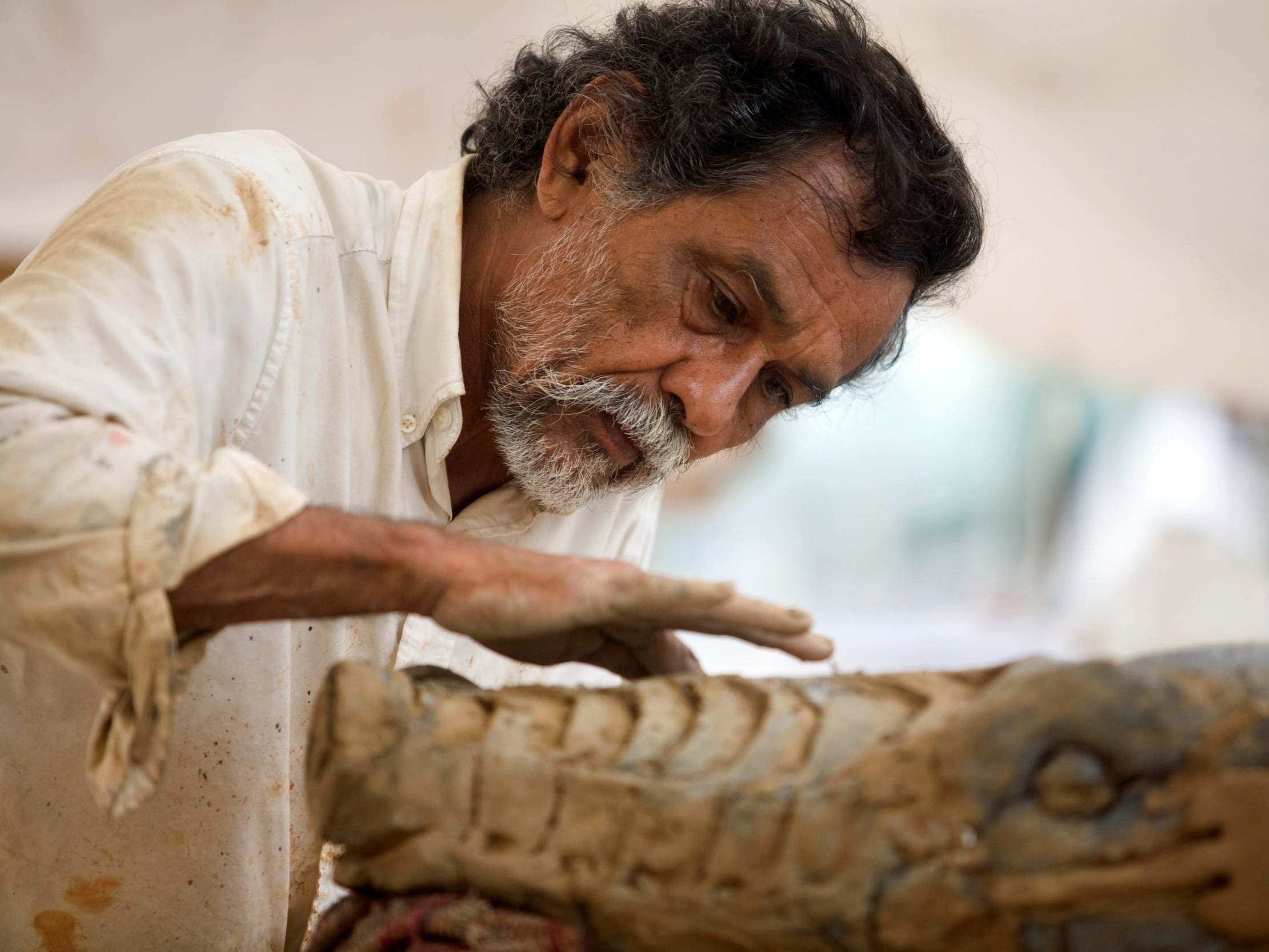Francisco Toledo: Mexican artist and activist whose work celebrated the Zapotec tradition
A master in painting, ceramics and sculpture, he was also a fiery defender of Oaxacan culture

Francisco Toledo, one of Mexico’s most renowned artists, fused nature and myth in his work while drawing international attention to the indigenous traditions of in the south of his country.
Toledo, who has died of cancer aged 79, was known as both a master artist and an ambassador for the southern state of Oaxaca, an impoverished hub of indigenous language and culture that he helped to elevate into a dynamic centre of the Mexican art scene.
The son of a Zapotec tanner and shoemaker, he worked as a painter, photographer, lithographer, engraver, sculptor, ceramist and tapestry designer, all while developing a reputation as a fiery defender of Oaxacan tradition. He sometimes described himself as a grillo (Zapotec for “cricket”), using a nickname for Oaxacans who – in addition to dining on grasshopper, a local delicacy – are “troublemakers and can’t sit still”.
When McDonald’s planned to open a new location in Oaxaca City’s historic square, he announced he would protest naked in front of the proposed site. His clothes stayed on, but he gave away free tamales (a traditional Mesoamerican dish) alongside hundreds of demonstrators, chanting: “Tamales, yes! Hamburgers, no!”
Other political efforts dovetailed with his art, which veered from grand 80ft-long sculptures to whimsical hand puppets and felt hats. After 43 students in the rural state of Guerrero were abducted by police and disappeared in 2014, Toledo painted their portraits on kites, flying them with a group of children as a memorial to the victims.
For the most part, however, he avoided the overt political messaging that dominated Mexican art in his youth, when muralists Jose Clemente Orozco, Diego Rivera and David Alfaro Siqueiros painted large-scale works on national themes.
A member of what is sometimes called the “breakaway generation” of Mexican art, Toledo rose to prominence in the Sixties with small watercolours that were often humorous or erotic, featuring a menagerie of animals – crabs, cows, coyotes, jaguars, alligators, turtles, toads, monkeys, grasshoppers and scorpions. Mysterious human-animal figures abounded, and his creatures often seemed drawn from myths and fables.
Toledo drew on the pre-Hispanic artistic traditions of the Isthmus of Tehuantepec, which divides the Pacific from the Gulf of Mexico, and studied the work of old masters (Rembrandt and Francisco Goya) as well as experimental modernists (Marc Chagall and James Ensor).
He painted on tortoise shells and ostrich eggs, created scores of self-portraits and made a frequent subject of Benito Juarez, a fellow Oaxacan Zapotec who served as president of Mexico in the mid-19th century. Among Toledo’s last exhibits was Duelo (Mourning), which featured 95 ceramic pieces, many tinted a hellish red, showing disembodied limbs or inhuman figures, mouths agape in horror. “With everything that one hears in the news, in the newspapers, little by little this pushed me to do an exhibit on the theme of violence,” he said. “And red [colours] that I had never used began to appear, colours of blood. None of this was planned.”
Francisco Benjamin Lopez Toledo was born in 1940. In interviews, he alternately said he was born in Mexico City and Juchitan. The family eventually settled in Minatitlan, in the southeastern state of Veracruz, where a young Francisco romped through forests and turtle-filled marshes while his father made alligator-skin belts at his shop.
Toledo went to art school in Mexico City, and by 19 had his first exhibition. It travelled to Fort Worth, Texas, and soon he made his own way to Paris, where he learned copper engraving from English artist Stanley William Hayter, befriended Mexican writer Octavio Paz and studied under Zapotec painter Rufino Tamayo.
In 1965 he returned to Oaxaca, where he became known as El Maestro. For years he maintained the look of a rumpled wild man or wizened elder, with a bushy beard and a simple outfit of cotton shirt, white trousers and leather sandals. He rarely spoke to the media but acquired a local celebrity, partly through philanthropic work driven by six-figure sales of his art.
Toledo established the Graphic Arts Institute of Oaxaca (now led by his daughter Sara), and also helped to form a contemporary art museum, photography centre, library for the blind and environmental organisation.
Although Toledo’s work often suggested a union between humans and nature, he spoke of humanity’s drive towards “total destruction” and could be pessimistic about the prospects of preserving natural spaces like the marshes he delighted in as a boy.
“I do what I do without any hope of a lasting or significant effect,” he said. “I do these things because I feel it’s my duty and because I have the means to do them at this moment in time ... What will happen will happen no matter what I do. What we do by day to conserve gets erased at night by TV or movies or radio. So to talk of hope is somewhat in vain.”
He is survived by his third wife, Trine Ellitsgaard, a Danish-born weaver, and five children.
Francisco Toledo, artist, born 17 July 1940, died 5 September 2019
© Washington Post
Subscribe to Independent Premium to bookmark this article
Want to bookmark your favourite articles and stories to read or reference later? Start your Independent Premium subscription today.

Join our commenting forum
Join thought-provoking conversations, follow other Independent readers and see their replies